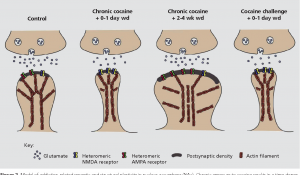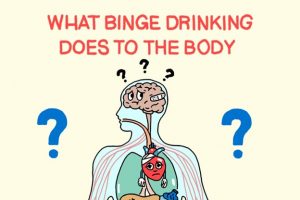Addiction is a term that almost everyone seems familiar with. People can be addicted to a variety of things, whether it be substance use like alcohol or pills, a food addiction like sugar, or a behavioral addiction like gambling. One of the most common forms of addiction seems to be alcoholism, affecting approximately 14.5 million Americans age 12 and up and over half of all Americans have family history of alcoholism. This form of addiction is incredibly prevalent in our society and doesn’t seem to be stopping anytime soon. Researchers have been looking into the action of binge drinking as it occurs within the younger generations, age 15-25, to see if it could possibly be a source of etiology for chronic alcoholism.
Chronic vs. Binging Alcoholism
Chronic alcoholism is defined as partaking in a long period of excessive alcohol intake in which a person develops a dependence for the substance, a high tolerance, and experiences severe withdrawal symptoms. In comparison, binge alcoholism is considered to be a drinking heavily in an episodic manner, but these drinkers do not have a dependence, tolerance, withdrawal, or increased preference for the substance after the drinking episodes. Binge drinking is incredibly common within high schoolers and college-aged students and is actually three to four more times common than chronic use; it also seems to add more risk to becoming a chronic user, with 15% of binge drinkers going on to become a chronic alcoholic. The biggest question is, why does binge drinking not have the same effects as chronic drinking? The answers lie within the neurochemical background of addiction.
What’s Going on in the Brain?
During addiction, the reward pathway (mesolimbic dopamine pathway) seems to be impaired, especially within the ventral tegmental area (VTA) and the nucleus accumbens (NAc). This happens due to excessive drug exposure. In chronic alcoholism, repeated drug use sensitizes the brain’s response to the drug, creating a vicious cycle of relapsing and withdrawal. When the drug is excessively being used, CREB (cAMP response element-binding protein) is released within the NAc, which promotes a rewarding behavior. The chronic drug use causes the brain’s receptors to change so they can become more tolerant to the drug and require a higher dosage for the same pleasure. The constant intake of drugs causes long-term depression of the NMDA receptors on the dendritic spines to change and increases the presence of AMPA receptors instead and creates long-term potentiation. This conformational change that takes place at the postsynaptic site adapts to the amount of drug use and allows tolerance and dependence to form. To read more about this you can read here: https://thebrain.mcgill.ca/flash/i/i_07/i_07_m/i_07_m_tra/i_07_m_tra.html

This is different within binge drinking because the drug isn’t being abused for a long period of time. Due to this, the dendritic spines don’t undergo that conformational change and tolerance and dependence aren’t formed. The issue with this, is that binge drinking can cause immediate toxic effects on the brain due to there being zero tolerance; excessive drinking will damage the brain faster than within a chronic user.
Treatments for Binge Drinking?
While there aren’t really any treatments for binge drinking, a three abstinence after a heavy binging episode is highly recommended by researchers as it can reverse the brain damage that occurred during the original episode. Abstinence can help within chronic cases as well, but the road to abstinence is much longer and difficult to the dependence built up for the drug and the symptoms the patient undergoes during withdrawal. Binge drinking is thought to be a relatively scary gateway into chronic use, but there aren’t any pharmacological treatments due to the lack of symptoms. That said, therapy and counseling are great resources to help uncover the environmental and personal causes that may be attributing to the binge episodes and can help reduce the risk of developing chronic use.
References
https://americanaddictioncenters.org/rehab-guide/addiction-statistics
https://www.hindawi.com/journals/dm/2018/5623683/
https://academic.oup.com/alcalc/article/44/2/128/184655
